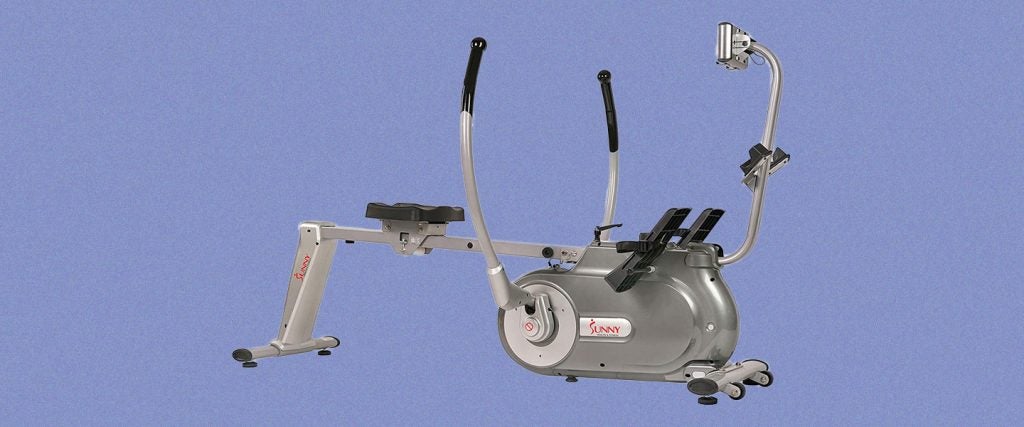Let me get my biggest fitness bias out of the way immediately: By almost any measure, it’s difficult to top the Concept2 Rowing Machine. It provides you with total control over the pace of your workout, and if you’re competitively minded, it’s considered the gold standard for the dryland preparation of real crew teams. In fact, the ability of the Concept2’s data to be effortlessly uploaded online enables its readouts to be used in authentic rowing challenges and competitions. There are also legitimate national and world championship events in indoor rowing that necessitate the use of the Concept2.
Now, let’s take everything I’ve just said and pretend you couldn’t care any less about it. You’re not interested in rowing as a competitive sport, and you can barely tolerate people in real life, let alone ever wanting to interact with them online through a rower of all things. You want the condition of your heart to improve, and you wouldn’t mind some muscle enhancement, but nothing is more annoying to you than the thought that your rowing technique has to be perfect in order for you to get the handlebar to pass over your knees at the right time.
You’ve got it. I just want to row myself into better shape without having to be a stickler for technique.
As tough as it may be for me to accept this position, I’m able to understand it and offer you some advice.
If you want your rowing machine to still somewhat resemble real-life rowing, I’d recommend the full-motion magnetic rower from Sunny Health & Fitness. Yes, it’s a two-handled rowing machine — technically known as “sculling” in the competitive rowing world — which means that you’ll never have to make constant adjustments to the path of the bar as you’re pulling it back in order to avoid your knees. Also, because the resistance is magnetic as opposed to the more natural tension provided by a flywheel, you’ll never need to be concerned about timing the stroke to maintain momentum as you would on a Concept2, which is designed to replicate the inertia and momentum patterns of real crew shells.
As a cool complementary touch, there’s no requirement that you use both of this rower’s handles at the same time; you can grab just one and replicate a form of motion that’s actually closer to a true competitive single-oar rowing movement pattern, while still never having to worry about your knees impeding your progress.
I have absolutely no desire for my rowing workout to approximate true rowing; I just want to engage the greatest number of muscles as I possibly can.
In that case, I’d recommend the Power10 elliptical rower from Teeter. Again, this is a machine that isn’t going to necessitate that you develop the precision timing of the Concept2, and even better, it theoretically fills in the missing muscle gaps of the Concept2, which doesn’t place significant emphasis on the chest. The Power10 takes you through a pulling and pressing function, getting the chest fully involved in the process, and adds to the work of the triceps and shoulders. Essentially, no muscle groups go fully unaddressed.
The rowing purist in me needs to mention the boat-sized elephant in the room here: On a Concept2, failing to move will instantly bring you to a dead stop; the Power10 is basically an elliptical, so you’ll be riding momentum the entire time. This can create an awkward changeover period, where momentum will automatically drive you forward and backwards whether your muscles have transitioned over or not. As such, it may add to the challenge if you ever hope to transition over to a more traditional rowing machine.
But until that time comes, you could do a lot worse than setting sail with either the Power10 or Sunny Health & Fitness magnetic rower.

